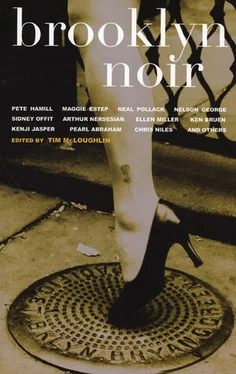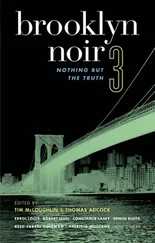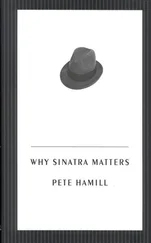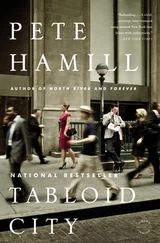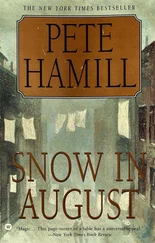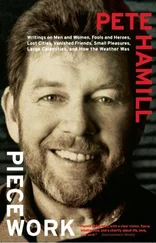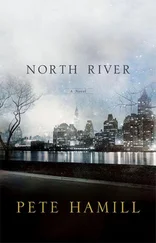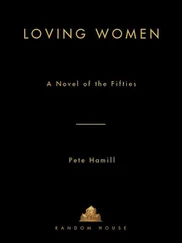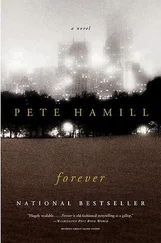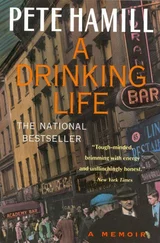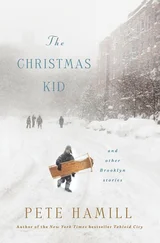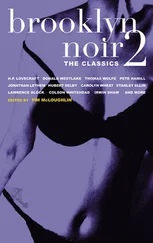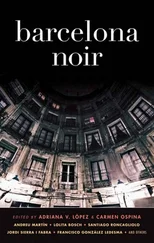“Dere’s no guy livin’ dat knows Brooklyn t’roo an’ t’roo, because it’d take a guy a lifetime just to find his way aroun’ duh f — town.”
— from “Only the Dead Know Brooklyn” by Thomas Wolfe
Introduction
Love & crime

I recently received a phone call from one of my father’s old friends. He’s an interesting man who has led a dangerous life, and since my father’s death I only hear from him every year or two. He was calling to tell me that his kid brother’s daughter, fourteen years old, had gone missing. Thankfully, he called again the next day to say she’d been found safe at a friend’s house. It had merely been a case of teenage angst acted out by briefly running away. I expressed my relief, and told him I’d take down the homemade flyers I’d posted. We talked for another few minutes, then signed off.
“Take care, you know I love you,” he said as he hung up.
He is six-feet four-inches tall, and is a pretty formidable guy still, at age sixty-three, with a face full of scar tissue and a triple bypass behind him. You know I love you. I thought about the fact that the only men I’ve known, other than my father, who are comfortable telling me that they love me, are also men capable of extreme violence. Is it a personality trait? Are these men just so much more emotional that they are capable of greater feeling? Love and hate, compassion and violence.
No. It’s a code; an example of the language of inclusion. It has been used to the point of tedium in novels and films depicting organized crime families, but in the real world, membership in social alliances forged in the street can be between two people or twenty. And can stand for generations or dissolve the same evening. But the first thing that will emerge in such associations is a commonality of language, or pattern of speech, that suggests acceptance and loyalty, even if the individuals are from vastly different backgrounds.
The communities across Brooklyn depicted in this book are for the most part not representative of the popular image of the borough today. Most stories from Brooklyn don’t focus on places like Canarsie, as Ellen Miller’s moody, disturbing tale does, or East New York, as in Maggie Estep’s clever, evocative story. And when the places are familiar, the enclave within often isn’t. The Park Slope of Pete Hamill’s “The Book Signing” is not a latte-drenched smoke-free zone celebrating its latest grassroots civic victory over some perceived evil, but the neighborhood of those left behind — the handful of old-timers living over the stores on Seventh Avenue and in the few remaining rent-controlled apartments, having to walk further every day to find a real bar or grocery store. The Williamsburg of Pearl Abraham isn’t the hipster hang, but the Hasidic stronghold. What these underground communities share, though, and these writers capture brilliantly, is the language.
With the exception of a few characters, like Arthur Nersesian’s predatory protagonist, all of the actors in these pieces belong to some sort of community, and it is their membership that defines, and saves or dooms them.
Some of these neighborhoods overlap and some are from opposite ends of the borough, and it doesn’t mean a thing in terms of language. Two or three of these stories could take place within a half-dozen blocks of each other, and the players would barely know where they were if their places were shifted. Ken Bruen’s “Fade to… Brooklyn” is actually set in Ireland, and though I know a number of people who consider Ireland just another part of the neighborhood, I like to think of it as our virtual Brooklyn story.
The tales presented here are as diverse as the borough itself, from the over-the-top violent world of gangster rap, to a Damon Runyonesque crew of hardboiled old men. There are sexual predators, dirty cops, killers, and a horse thief. So the stories are different, but as I read them again, preparing to let this book go — reluctantly, because I don’t want it to end — I’m also struck by the way that they are similar. And that is in the most important way; because as any scholar sitting at the bar in a Flatbush gin mill knows, it’s about telling a good story. It is my privilege to share ours with you.
Tim McLoughlin
Brooklyn, January 2004
Part I
Old school Brooklyn
The book signing
by Pete Hamill
Park Slope
Carmody came up from the subway before dusk, and his eyeglasses fogged in the sudden cold. He lifted them off his nose, holding them while they cooled, and saw his own face smiling from a pale green leaflet taped to the wall. There he was, in a six-year-old photograph, and the words Reading and Book Signin and the date and place, and he paused for a moment, shivering in the hard wind. The subway was his idea. The publisher could have sent him to Brooklyn in a limousine, but he wanted to go to the old neighborhood the way he always did, long ago. He might, after all, never come this way again.
The subway stairs seemed steeper than he remembered and he felt twinges in his knees that he never felt in California. Sharp little needles of pain, like rumors of mortality. He didn’t feel these pains after tennis, or even after speed-walking along the Malibu roads. But the pain was there now, and was not eased by the weather. The wind was blowing fiercely from the harbor, which lay off in the darkness to his right, and he donned his glasses again and used both gloved hands to pull his brown fedora more securely to his brow. His watch told him that he had more than a half hour to get to the bookstore. Just as he had hoped. He’d have some time for a visit, but not too much time. He crossed the street with his back to the place where the bookstore awaited him, and passed along the avenue where he once was young.
His own aging face peered at him from the leaflets as he passed, some pasted on walls, others taped inside the windows of shops. In a way, he thought, they looked like Wanted posters. He felt a sudden… what was the word? Not fear. Certainly not panic. Unease That was the word. An uneasiness in the stomach. A flexing and then relaxing of muscles, an unwilled release of liquids or acids, all those secret wordless messages that in California were cured by the beach and the surf or a quick hit of Maalox. He told himself to stop. This was no drama. It was just a trip through a few streets where once he had lived but had not seen for decades. After seventeen novels, this would be his first signing in the borough that had formed him. But the leaflets made clear that here, in this neighborhood, his appearance might be some kind of big deal. It might draw many people. And Carmody felt apprehensive, nervous, wormy with unease.
“How does it feel, going back to Brooklyn?” Charlie Rose had asked him the night before, in a small dark television studio on Park Avenue.
“I don’t know,” Carmody said, and chuckled. “I just hope they don’t throw books at me. Particularly my own books.”
And wanted to add: I’ve never really left. Or to be more exact Those streets have never left me.
The buildings themselves were as Carmody remembered them. They were old-law tenements, with fire escapes on the facades, but they seemed oddly comforting to Carmody. This was not one of those New York neighborhoods desolated by time and arson and decay. On the coast of California, he had seen photographs of the enrubbled lots of Brownsville and East New York. There were no lots here in the old neighborhood. If anything, the buildings looked better now, with fresh paint and clear glass on the street level doors instead of hammered tin painted gray. He knew from reading the
Читать дальше
